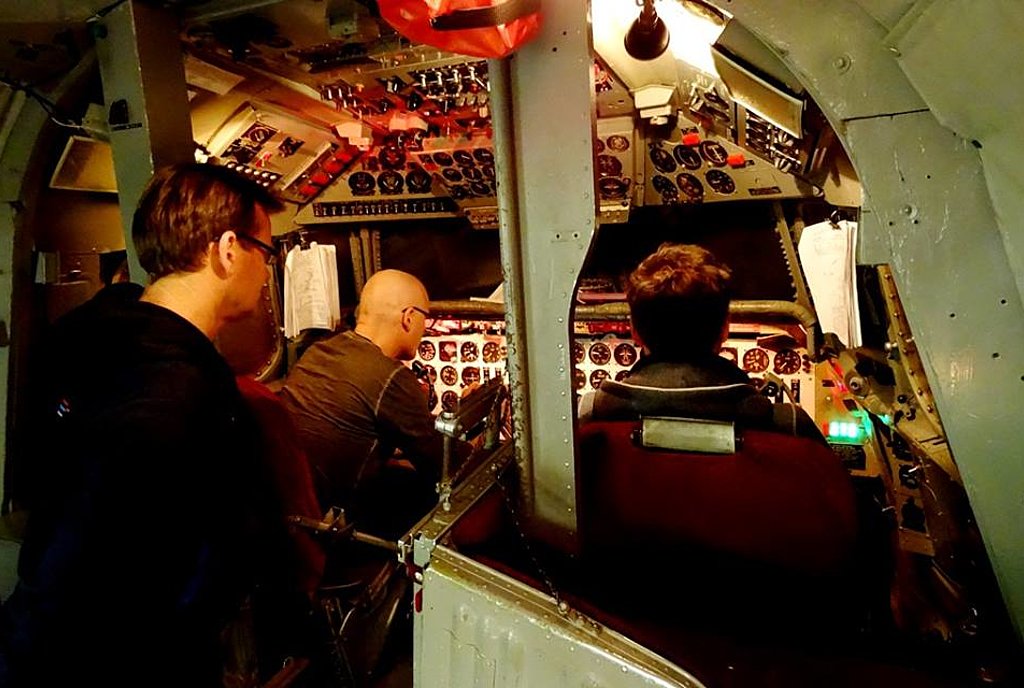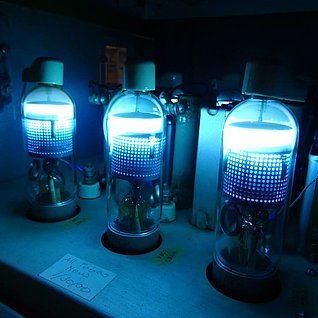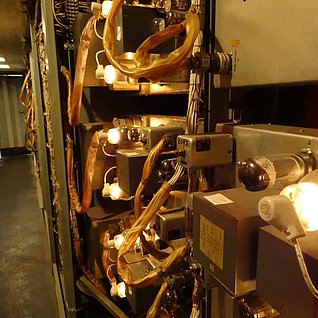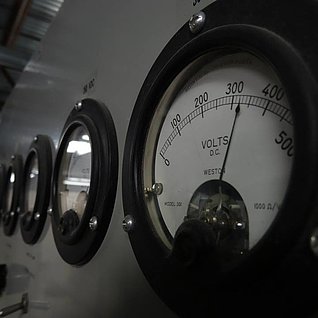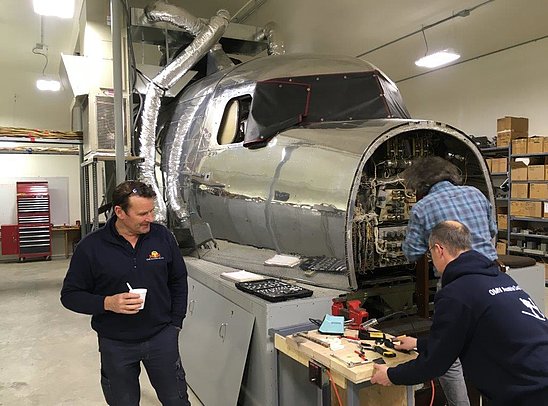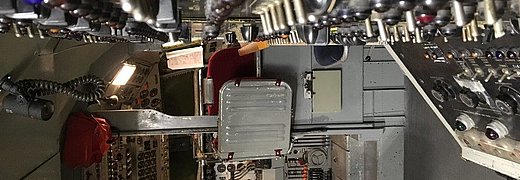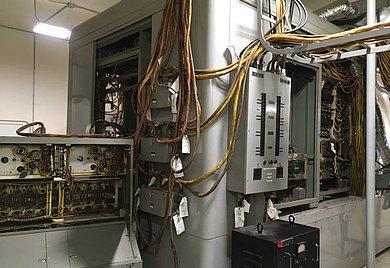THE WORLD’S ONLY
DC-6 Simulator
In the heart of Alaska, one can find a building housing a flight simulator and an analogue computer from the 1950s. The DC-6 simulator is the only one of its kind worldwide. Due to what can only be called lucky coincidences, the once highly modern construct has been made accessible again. The system has been restored with skill and dedication and is now operational again. Today, the Flying Bulls’ pilots can use the unique simulator to hone their flying skills.
Modern pilots have an obligation to complete training sessions and tests on simulators on a regular basis. Naturally, this is not a problem for pilots of newer aircrafts. But how can one train for older models? In the case of the DC-6, a working simulator actually still exists - and it’s a real highlight.
The simulator was assembled in the 1950s. It consists of an original front fuselage section with all the cockpit components of a real DC-6, whereby original instruments and a sound generator create a realistic environment for pilots. One can, however, not look out of the cockpit windows. At the time, suitable screens for such a feature simply didn’t exist. Instead, a so-called plotter indicates the flight route and provides orientation for the pilot. A separate “Trouble Console” can be used to create defects and system failures for practice purposes.
The entire facility is controlled by an analogue computer that is so large that it requires its own separate room. The computer consists of two rows, each approx. 15 metres long.
The simulator itself runs on 1950’s electronic tube technology, unlike today’s modern simulators.
The simulator was initially owned by Northern Air Cargo Alaska. The airline had DC-6 freighters in operation until a few years ago. Raimund Riedmann, the Chief Pilot Fixed Wing at The Flying Bulls, and his team were occasionally allowed to use the simulator.
This beneficial arrangement didn’t last long. When the company that was running the simulator decided to upgrade its fleet and decommissioned its DC-6 aircrafts, the future of the simulator was in doubt. However, The Flying Bulls were afforded the opportunity to acquire the simulator at a relatively cheap price shortly thereafter.
Two lucky coincidences have made it possible to use the DC-6 simulator again:
Rob Everts, the owner of Everts Air, is a DC-6 pilot himself and has always been enthusiastic about everything pertaining to this type of aircraft (including the simulator). He decided to erect a building with sufficient space in Fairbanks, Alaska, at his own expense.
Time had taken its toll on the simulator. After years of neglect, both the software and hardware were experiencing technical problems. Instruments, shifters, and the analogue computer were no longer working properly. This was the next challenge Everts Air and The Flying Bulls had to face. Who still knows how to deal with man-sized analogue computers and tube technology? As luck would have it, The Flying Bulls were made aware of two technical geniuses from Salzburg. Sigi Widerin and Gerald Viehhauser are among the few people worldwide who are not merely capable of mastering this technology, but also of maintaining and repairing such facilities. The Flying Bulls immediately contacted the two specialists and they knew exactly what to do. They flew to Alaska three times and - utilising original circuit diagrams - restored the simulator.
It’s a small miracle that this simulator is back in use and - more importantly - runs smoothly. The fact that it does is down to an enormous amount of personal commitment and the perseverance of all contributors. Today, The Flying Bulls travel to Alaska - mostly before the start of the flying season - to train in the original DC-6 simulator.
